Washington is a wildflower treasure trove—from coastal blooms to high-alpine carpets. With diverse elevations and climates, the state offers a stunning variety of flowers nearly year-round. These aren’t just pretty to look at—they belong to fragile ecosystems. Let’s explore prime sites and trails to maximize your wildflower experience—safely and respectfully.
1. Mount Rainier National Park
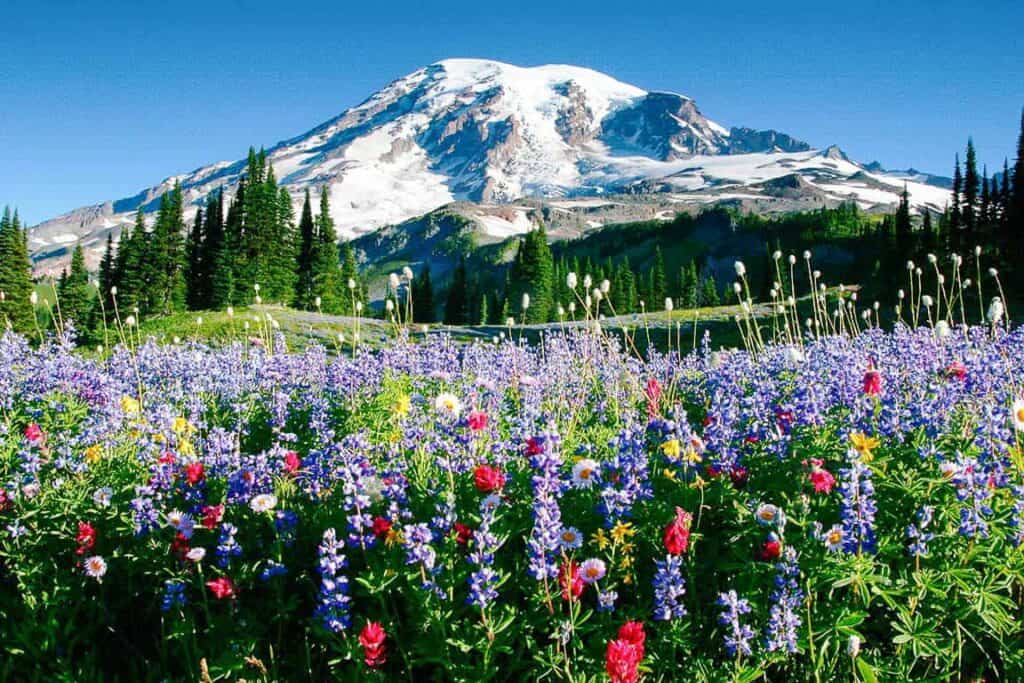
Where to go: Paradise & Sunrise meadows
- Nisqually Vista & Skyline Trail (Paradise): These paved and packed trails loop through subalpine meadows rich in lupine, paintbrush, avalanche lilies, and asters. Visit mid‑July to early August for peak blooms.
- Tolmie Peak via Mowich Lake (Carbon/Mowich area): This longer trek traverses lakeshore meadows loaded with avalanche lilies, paintbrush, and more—we’ve counted over 60 wildflower species on this route.
- Naches Peak Loop (Sunrise corridor): A moderate 3.5-mile hike around Chinook Pass, full of late-summer blooms and huckleberries.
Tip: Timed entry is required for Sunrise July 11–Sept 1 and weekends/holidays later .
2. North Cascades National Park
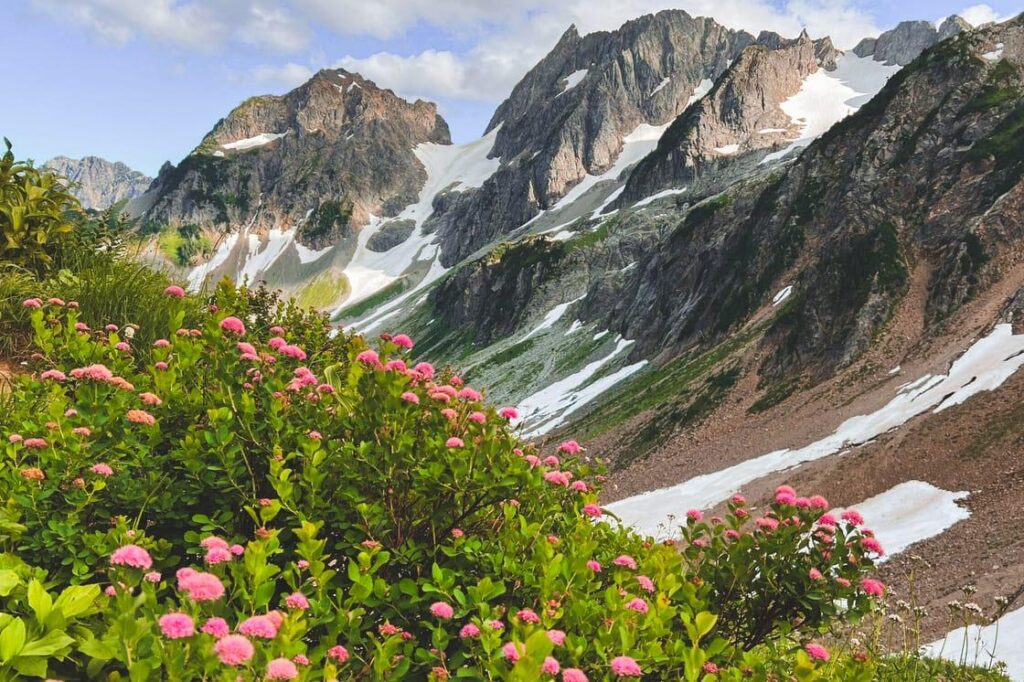
Must-hike: Blue Lake Trail
- Blue Lake (Highway 20): Clocking in at about 4.4 miles round-trip and 1,050 ft elevation gain, this moderate hike leads to an alpine lake framed by meadows bursting with lupine, azalea, early wildflowers, and mountain vistas.
For longer outings, Image Lake via Miners Ridge in the Glacier Peak Wilderness also boasts late-summer blooms among high ridges and lakesides.
3. Olympic National Park

Top hike: Hurricane Ridge meadows
- Hurricane Ridge trails: High-elevation loops here blanket the landscape in lupines, paintbrush, asters, and avalanche lilies during summer. Along with alpine hikers, you may find tiny orchids and goldenrod tucked into grassy edges. (NPS reports show lush Paradise-area meadows in similar elevation zones suggests Hurricane Ridge offers comparable floral scenes.)
For forest blooms, try Sol Duc and Hoh River trails in spring, where trilliums, bleeding hearts, and wild ginger emerge as the forest floor wakes up.
4. Columbia River Gorge (WA Side)
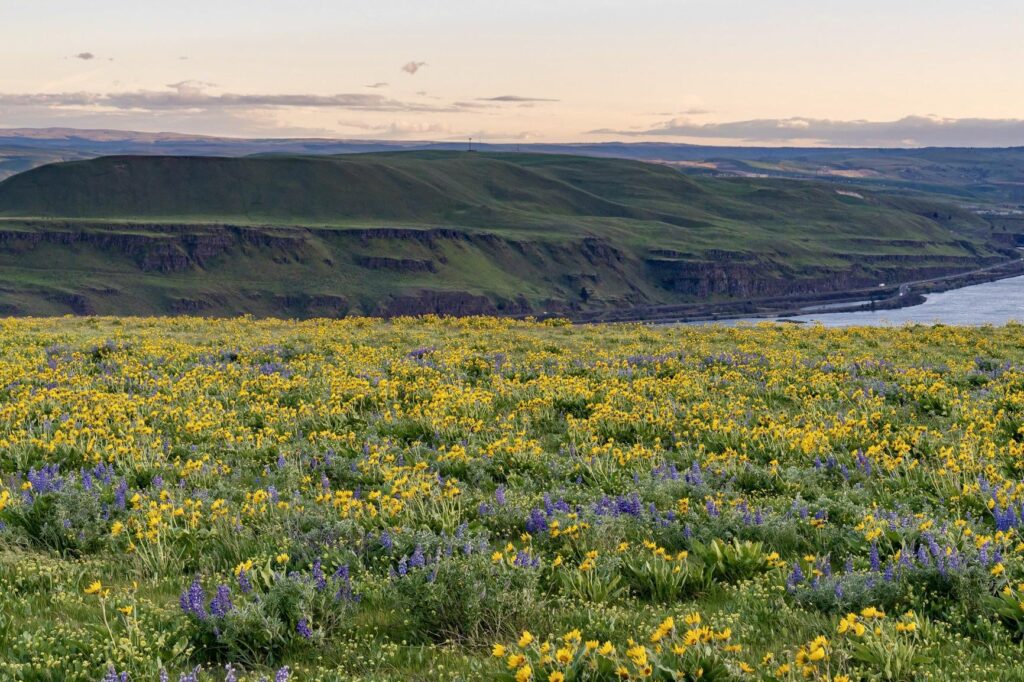
Best walk: Catherine Creek & Klickitat River
- Springtime here bursts with yellow balsamroot and blue camas carpeting open hillsides—especially along Catherine Creek and the Klickitat River Trails. These paths climb through oak and grasslands beneath views of Mount Hood.
5. Methow Valley
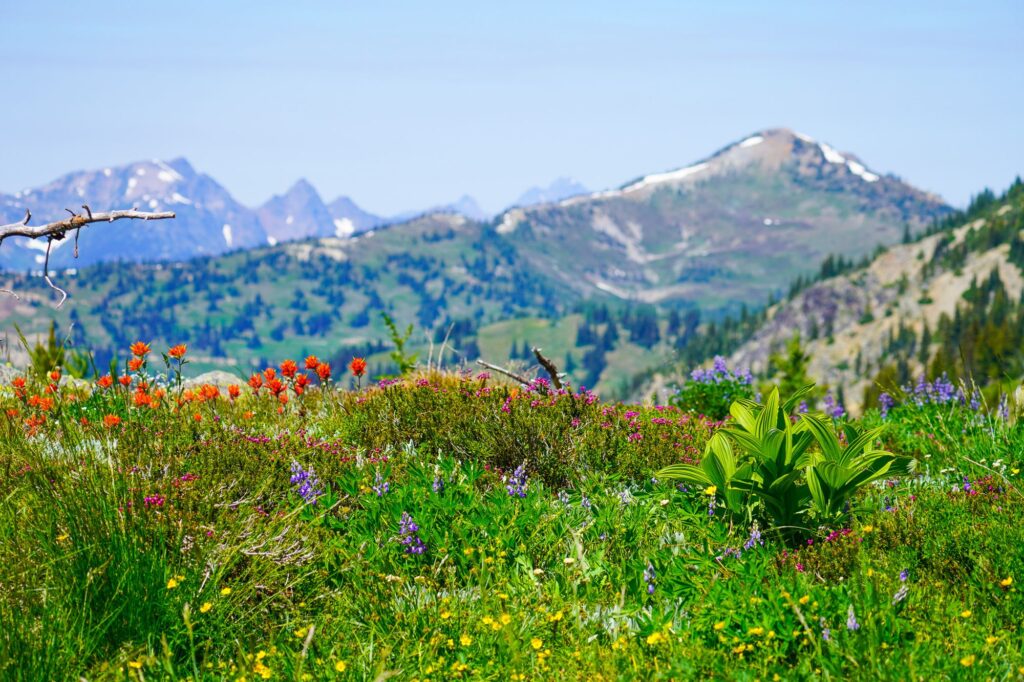
Recommended hike: North Cascades base trails
- Trails around Mazama and Winthrop offer low-elevation meadows with brilliant lupine, paintbrush, and asters in early summer. For higher-altitude, head to Alpine Lakes Wilderness routes like Lake Ethel Trail, which arcs past heather and wildflowers.
6. Yakima River Canyon
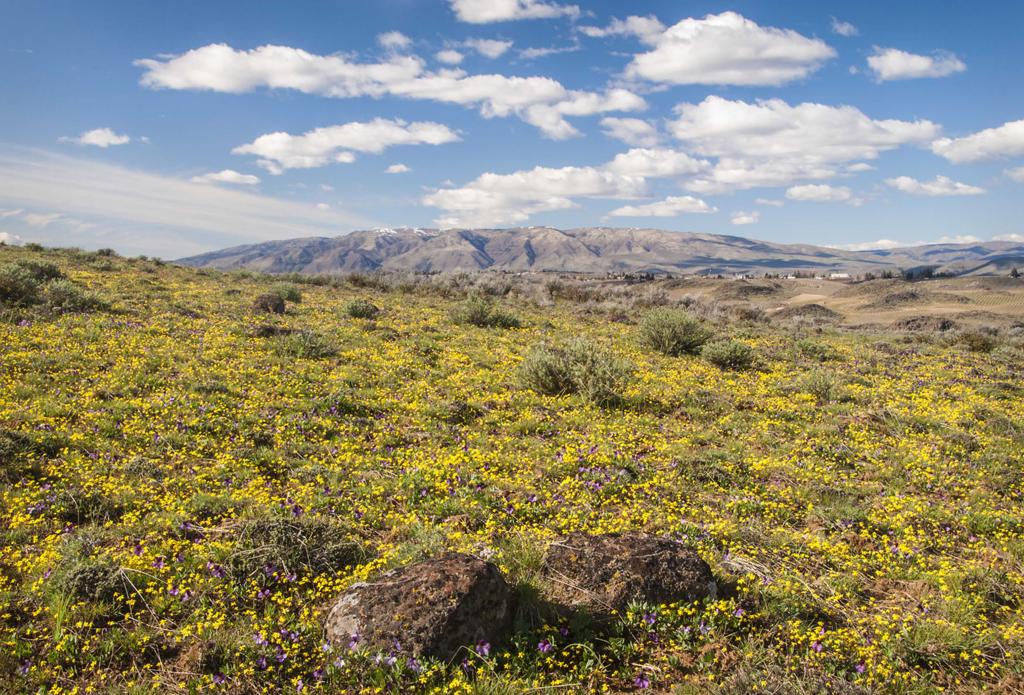
Explore: Yakima’s Desert Wildflowers
- In spring, canyon trails near Yakima showcase penstemon, lupine, and colorful desert blooms amid basalt cliffs. Head to rim-top or riverside routes to explore the unique high-desert meadow ecosystems.
Common Wildflowers & Best Viewing Spots
| Flower Type | Likely Spot | Peak Time |
|---|---|---|
| Lupine / Paintbrush | Paradise, Sunrise, Blue Lake, Methow | mid-July–August |
| Avalanche Lily | Paradise, Sunrise, Tolmie Peak | early summer |
| Camas | Columbia Gorge foothills | April–May |
| Trillium, Bleeding Heart | Hoh, Sol Duc, lower-elevation Rainier | March–May |
| Asters, Goldenrod | Late-summer alpine meadows | August–September |
🌿 Responsible Viewing Tips
- Stay on designated trails – off-trail wandering damages fragile plant systems.
- Never pick flowers; leave them for others and wildlife.
- Best photography times: Early morning or late afternoon light reduces harsh shadows and highlights colors.
- Pack smart: Water, snacks, layers, sunscreen, and a field guide will round out your flower adventures.
Planning & Permits
- Mount Rainier: Timed entry passes required for Sunrise mid‑summer. Paradise is first come, first served.
- North Cascades & Olympic: America the Beautiful pass or park fee required at trailheads.
- Easiest access: Paradise (Mount Rainier) and Blue Lake (N. Cascades) trails are both family-friendly with major wildflower shows.
Final Thoughts
No matter the season, Washington’s wildflower landscapes offer an unforgettable experience. Whether it’s lupine-lined alpine loops, rainforest understory blooms, or desert wildflowers in canyons, each region reveals a unique side of spring and summer. Plan around bloom times—early to mid-summer is peak in most alpine zones—and always tread lightly. The journey through these blooming landscapes isn’t just about the destination—it’s about slowing down, noticing color and detail, and protecting these fragile beauties for future generations.
Happy (and gentle) wildflower chasing!
Content creator and writer for multiple websites including All About Glamping, Fit Living Lifestyle, and Live Dream Discover. A full-time traveler who has spoken at various travel conferences around the world.

